World of Warcraft class guide: Choose the best class for you
Here's an overview of the classes and their specialisations.
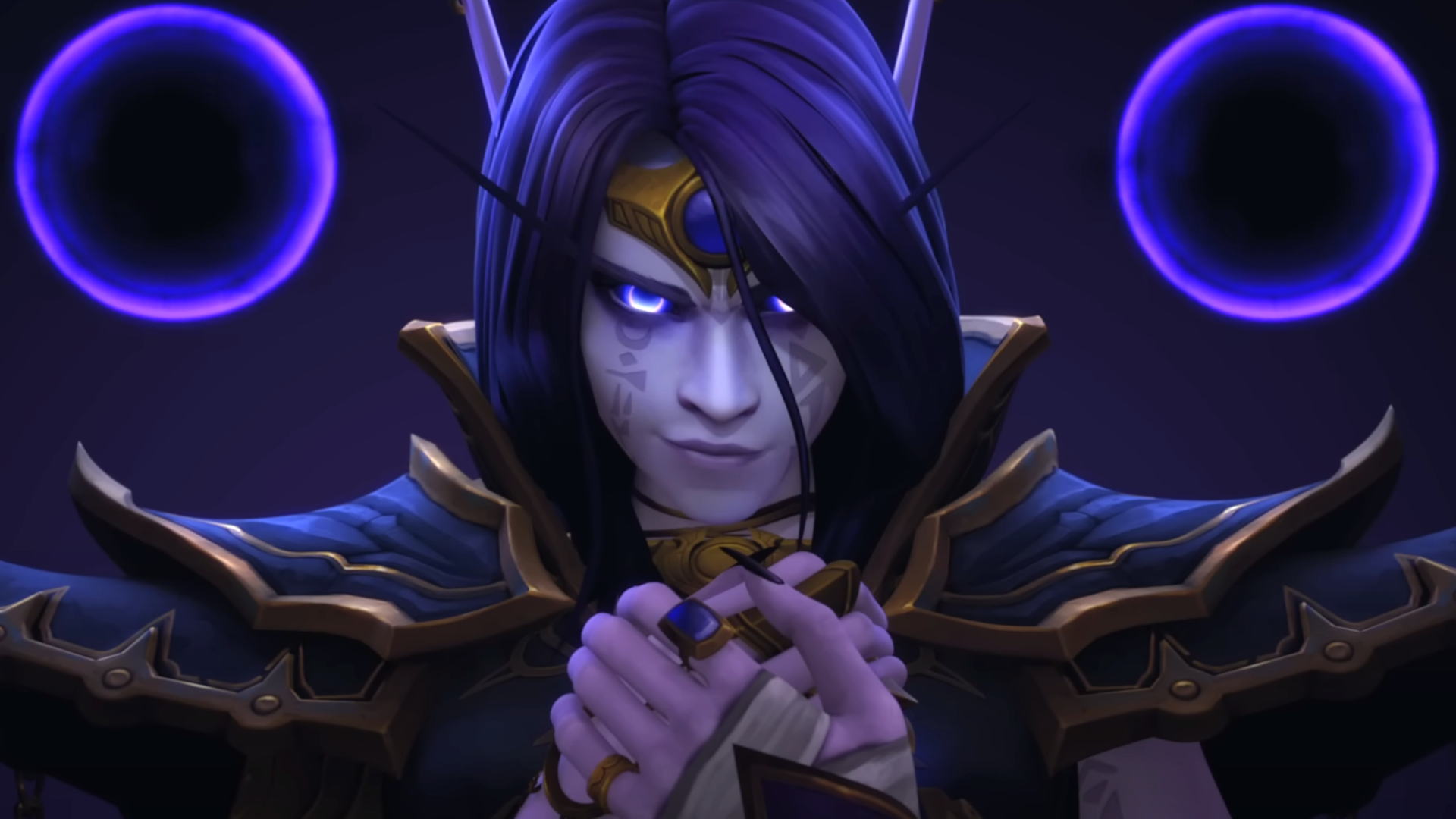
It's easy to feel overwhelmed by all the classes in World of Warcraft if you're thinking about jumping into Azeroth for the first time. The War Within expansion may well make you consider dipping your toes into Blizzard's long-running MMO for the first time. Or maybe you're thinking of returning after a long break. Either way, I'll bring you up to speed in this guide.
While the core of each class's playstyle has largely remained the same over the years, the choice can still be daunting for new or lapsed players. Recent expansions have added more classes—Dragonflight added the evoker, for example, so the list has grown considerably over the years. Read on for an overview of all the World of Warcraft classes that are available, as well as their individual specs.
The best classes for new players
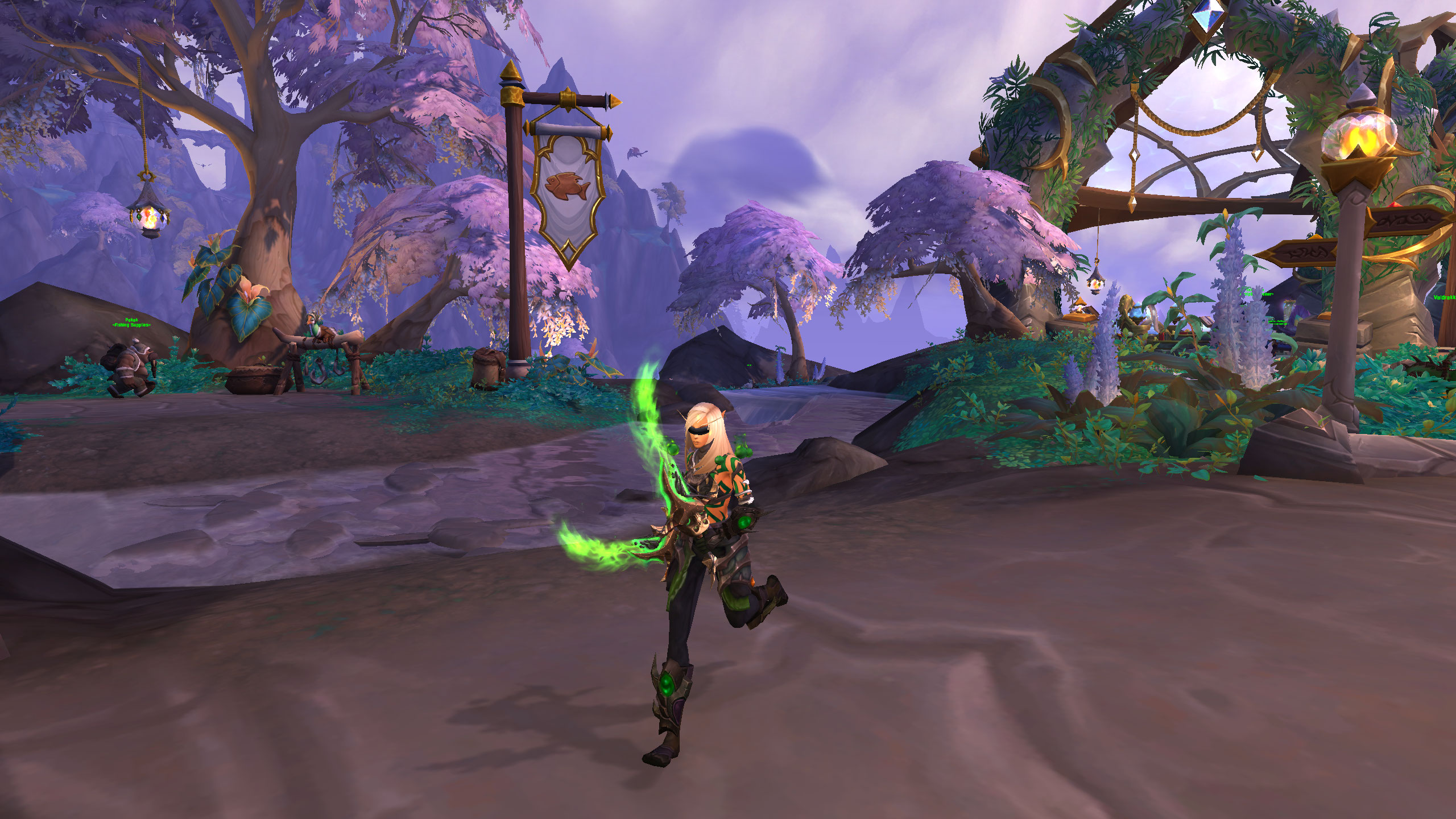
While most players will be fine playing any of the classes that World of Warcraft offers, if you're planning on levelling solo or are new to MMOs, certain classes make things a little easier. Here are a couple of considerations, with more detailed breakdowns for each class further down:
- Beast Mastery Hunter (ranged):
With a pet to fight alongside you and pull the attention of most enemies you're fighting, BM hunters are great for easing you into the world of Azeroth. As your pet will be taking the brunt of most attacks, it gives you time to breath during fights and learn your skill rotation with minimal pressure. - Havoc Demon Hunter (melee):
This is a good choice if you're more comfortable being in the thick of a fight. They do a ton of damage while also gaining a significant amount of passive healing, making them a fairly forgiving class to play. They're also incredibly agile, so if you do get in a tricky situation, you can easily dash or glide away from trouble.
All World of Warcraft classes
This is by no means a comprehensive guide on all the classes in World of Warcraft—there are plenty of sites out there that break down each class in far more detail. Think of this more as an overview to give newcomers and returning players an idea of how each class and spec plays.
It's also worth noting that you can change specialisation at any time at no cost, so it's worth playing around to see which you like best.
Evoker (ranged damage/healer)
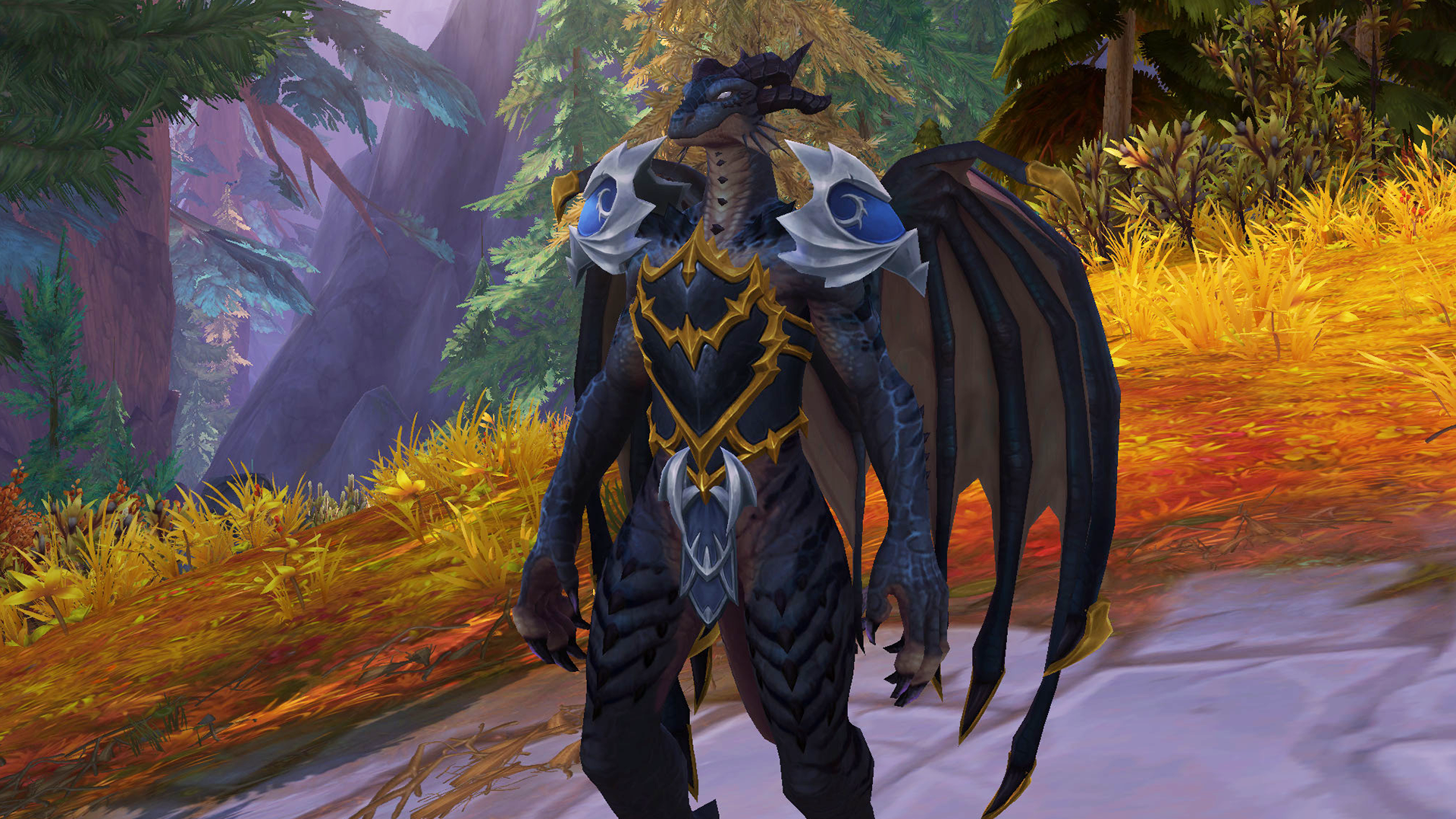
Evokers were added during the Dragonflight pre-patch and start at level 58. They wear mail armor—though this won't show up in Dracthyr form—and use daggers, fist weapons, and one-handed swords, axes and maces as weapons. Like demon hunters, evokers can use their wings to glide, though they also have a racial "Soar" ability that works similarly to dragonriding. Evokers also sit at a strange spot between ranged and melee when dealing damage or healing so may be better suited for more advanced players.
Devastation is the evoker's damage-dealing spec. It focuses on casting a variety of spells from either the Red or Blue Dragonflight schools of magic. Most spells have a 25-yard maximum range—just short of other ranged classes—and some spells will need to be empowered before being unleashed to get the most out of them. They bring a lot of utility to any group situation, including defensive and movement abilities, and can throw in healing to help out in tricky situations. Devastation is the best class for leveling unless you plan on working your way through dungeons.
Preservation is the healing spec for evokers. This specialisation also has empowered spells which deal more healing when charged and most have the 25-yard range you'll need to consider. Preservation favours AoE healing and really shines when groups are stacked. It also has high mobility, plenty of defensive abilities and can deal a fair amount of damage if needed too.
Warrior (melee damage/tank)
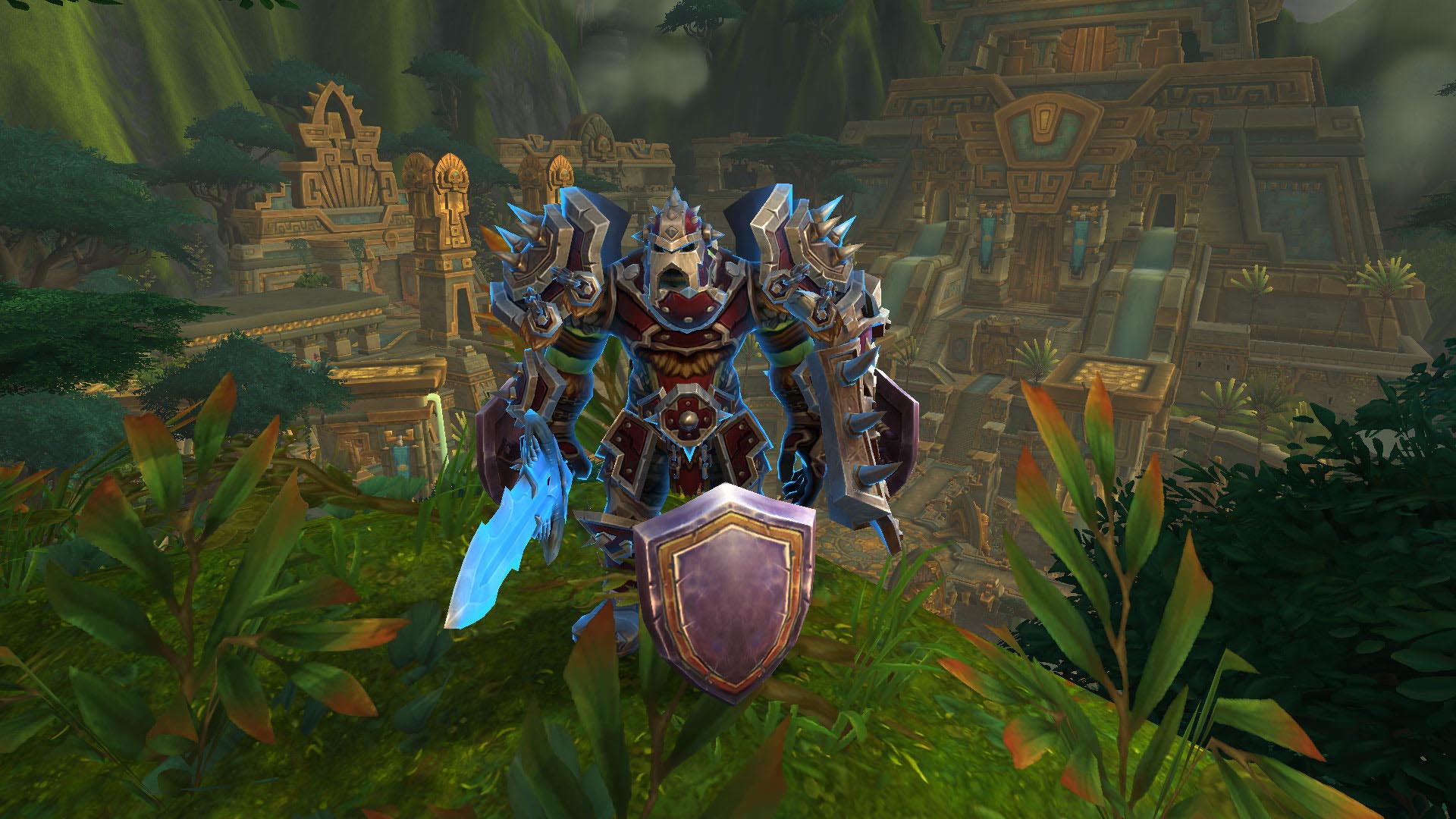
If you like smacking things around with swords, the warrior may well be the class for you. All three specs are melee-oriented and wearing plate armour means that even the damage specs can take a hit or two. It's a highly mobile class with a leap and a charge at its disposal and you'll be a welcome addition to group content, thanks to the warrior's Battle Shout buff which provides a party or raid-wide attack power increase.
Arms is a damage spec that uses a two-handed weapon, has high damage in both single-target and AoE situations—though not at the same time—and gains its first self-healing abilities at later levels. It also has a number of defensive options available so it's unlikely that you'll struggle too much due to its high damage output.
Fury is a fast warrior spec and can dual-wield two-handed weapons and early on has access to a skill that will restore health as well as deal damage. They deal high damage, but lack any solid AoE skills at lower levels.
Protection, as the name might suggest, is the warrior's tanking specialisation and it uses a one-handed weapon and a shield. It has great damage reduction abilities and is incredibly mobile but lacks any self-heals and its defensive abilities rely on good resource management.
Paladin (melee damage/tank/healer)
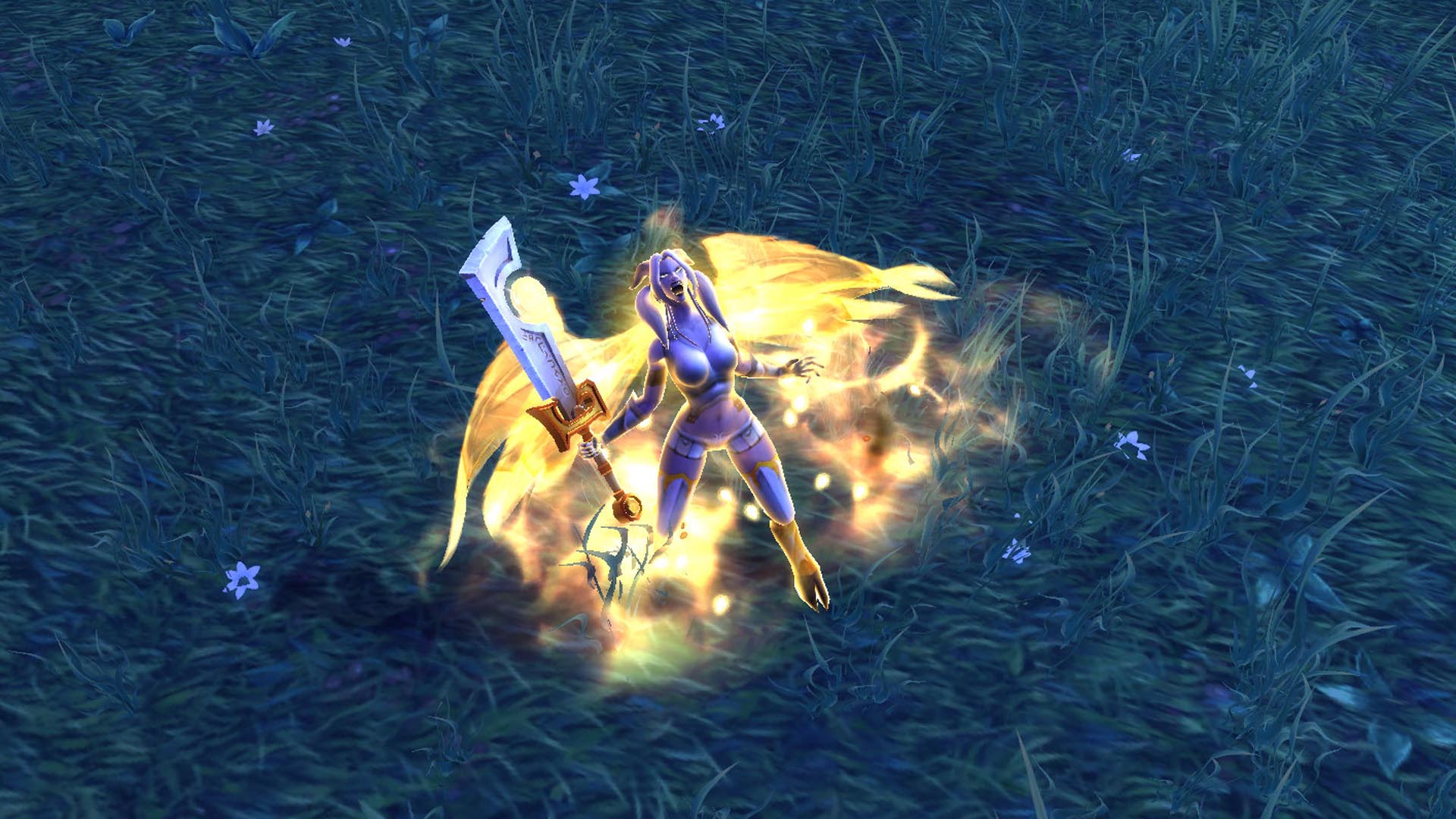
Paladins also wear plate armour and can cover any of three group roles, making them a flexible class to play. They also have a lot of utility while levelling and in group situations with a choice of one of three Auras, an eight-second immunity to all damage as well as a powerful heal that can restore the target's health to full.
Retribution is the damage-dealing spec and uses two-handed swords, maces or axes. They rely on Holy Power as their main resource and fair equally well in both solo and group content with good single-target and AoE damage. Thanks to their high damage, heals, and defensive abilities, they're an easy spec to level.
Holy is the paladin's healing spec and wields a one-handed sword or mace and a shield. It has high single-target healing making it a good tank healer and their utility is generally sought after in most group content. They have high survivability thanks to their defensive abilities and plate armour but, as with other healing specs, you would generally avoid levelling as Holy due to their low damage—unless you're planning on levelling solely through dungeons.
Protection is the tanking spec and uses a sword and shield. It is potentially a very strong tank with access to immunities, self-heals, and damage reduction abilities though it can suffer if the latter is poorly timed. This is a good option to level with if you want to play it safe.
Hunter (ranged and melee damage)

Hunters are the main pet class in World of Warcraft. They wear mail armour and have great survivability due to their tanking pets and their Feign Death ability, making them appear dead to enemies and dropping all threat. At level five, hunters gain the Tame Beast ability, allowing them to capture any tameable animals they come across and keep them as pets. All three specs have a good deal of utility, with various traps and interrupts.
Beast Mastery is the first ranged damage dealing spec and uses a bow, crossbow, or gun. It relies heavily on the pet to deal damage and it's a highly mobile spec, able to deal full damage even while moving. It has high damage in most situations and fairs well in both dungeon and raid environments. Out of all the classes in the game, this is probably one of the easiest specs to level.
Marksmanship is also a ranged damage spec and like Beast Mastery, uses a bow, crossbow, or gun but otherwise differs quite dramatically. The Lone Wolf passive ability means you'll deal less damage if you have a pet summoned and a lot of the skills have a lengthy cast time, losing a lot of the mobility that Beast Mastery offers. However, the Marksmanship hunter is capable of high burst damage. It's viable to level with but you'll need to rely more on traps and kiting enemies to avoid damage.
Survival is the melee damage dealing hunter spec and wields a polearm or a staff. It was originally ranged but was reworked to its current form at the beginning of the Legion expansion. It has high single-target damage and a good degree of mobility for a melee class with its Harpoon ability. Survival is a solid levelling choice and has a good deal of survivability, though Beast Mastery is safer.
Rogue (melee damage)

Rogues are sneaky and best known for their Stealth ability. They wear leather armour and use Energy as their main resource and spend Combo Points to deal big damage to their enemies. They have a good deal of utility including a number of interrupts and stuns and a self-heal on a 30-second cooldown. Their Shroud of Concealment ability allows a whole group to move undetected for a short time. While rogues are fun to play and elements of levelling can be made much easier with stealth, there are much easier classes to choose from if you're just starting out.
Outlaw dual-wields one-handed weapons and relies heavily on good resource management to deal direct damage to enemies. It has strong AoE damage but the overall output can vary because of the RNG element of the Roll the Bones ability which grants a random buff.
Assassination dual-wields daggers to deal damage. It favours the use of poisons and bleeds to take down enemies and you'll need to keep these up for maximum damage. This spec has high, sustained single-target damage and its defensive abilities give a good amount of survivability.
Subtlety also uses daggers and relies more on moving in and out of stealth and positioning behind the enemy to maximise its damage. Of the three rogue specs, this one is the most complicated to master, making it suited to more experienced players.
Priest (healer/ranged damage)
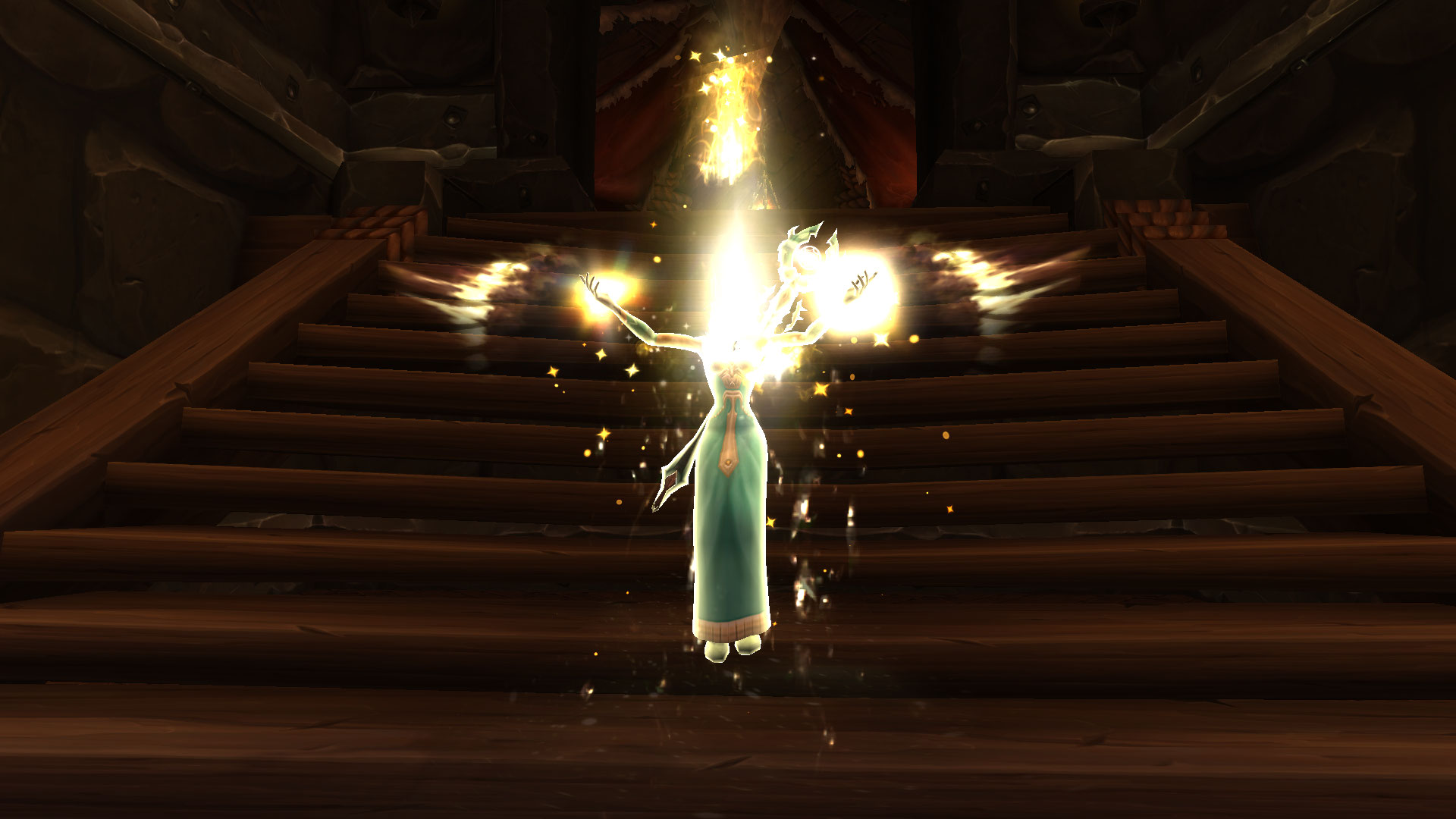
The priest is World of Warcraft's quintessential healer class. It wears cloth armour and uses a staff or one-handed weapon with an off-hand. It has some pretty dazzling spell effects along with quite a bit of utility, including Leap of Faith which pulls a friendly target to the priest's location. It has two very different healing specs to choose from as well as a third, ranged damage spec. It also brings a significant stamina boost to party or raid members with the Power Word: Fortitude buff.
Holy is a pure healing class with a number of tools that can help out and buff other healers in group content. It shines as a raid healer and has good single-target healing for dungeons or tank healing. This is probably one of the easier healing specialisations to learn, though it's better to level as either of the other two specs as Holy has relatively low damage.
Discipline primarily uses the Atonement buff to heal players with the damage it deals. The priest must manually apply Atonement to party or raid members which allows a percentage of damage done (by the priest) to heal those players. The Discipline priest also has on-demand healing and absorb shields and can perform well in most situations though it takes considerable practice to play well.
Shadow is the priest's damage spec and relies on multi-dotting and generating and spending the Insanity resource. As a cloth wearer, you'll need to be careful when engaging groups of enemies but this is countered by some decent self-healing. One potential issue while levelling as Shadow is the splash-effect of Void Eruption—if talented—meaning you will hit all enemies within 10 yards, as well as any neutral mobs that happen to wander past, so you could easily become overwhelmed.
Shaman (melee and ranged damage/healer)
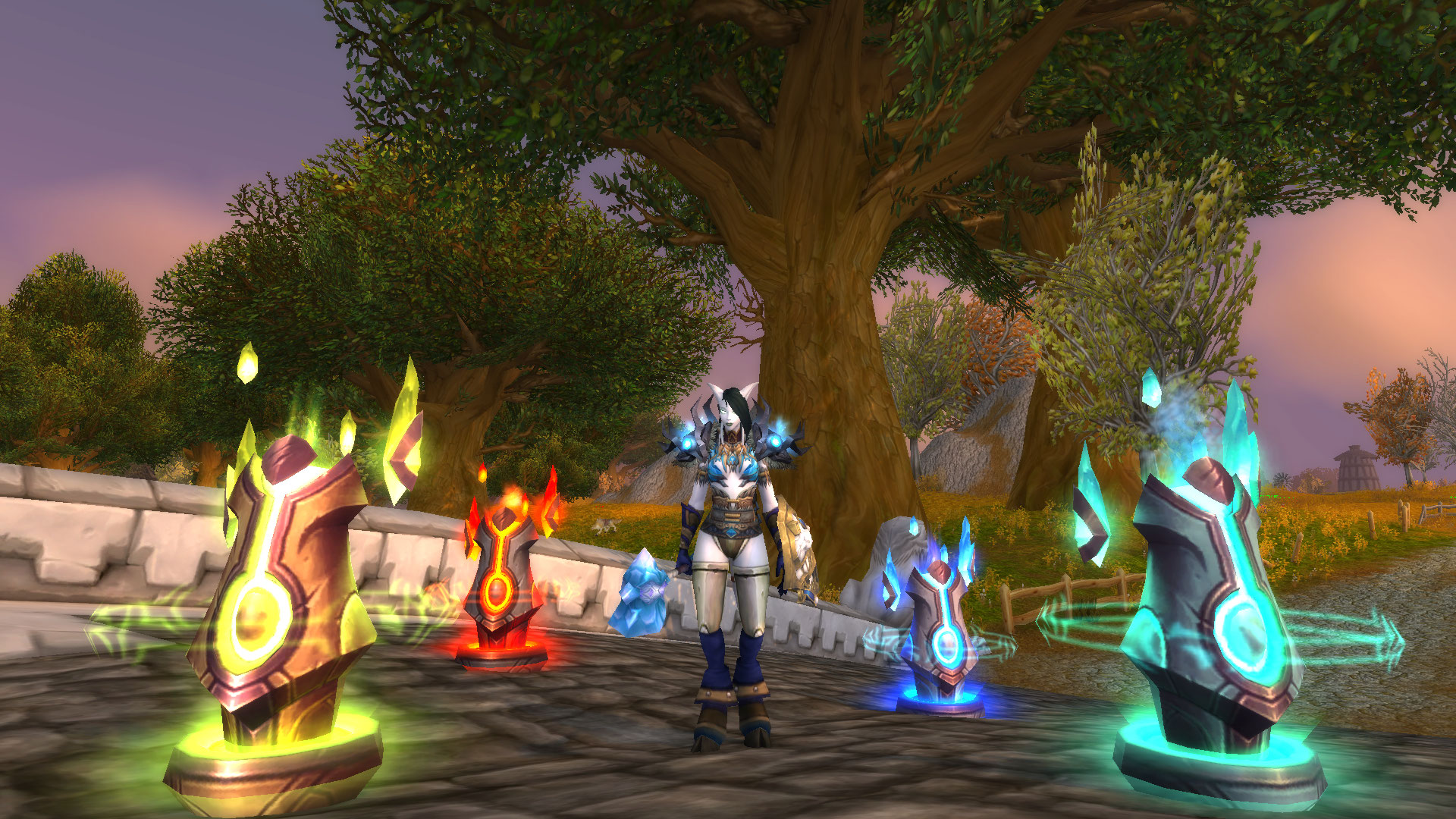
Shamans are element-focused mail armour wearers and have some of the best utility spells in the game. They can use totems to deal damage, immobilise enemies, or heal group members and all three specs have an interrupt on a short cooldown. Additionally, if the shaman dies, they can resurrect themselves and they can transform into a Ghost Wolf which increases movement speed. The sheer number of spells and abilities that the Shaman has may overwhelm newer players.
Enhancement is the melee damage spec that dual-wields one-handed weapons and relies on generating and spending their primary resource, Maelstrom. They have high sustained single-target damage and perform well in both dungeon and raid situations. With a tanking pet that can be summoned on a five-minute cooldown and access to healing, they are generally the best choice for levelling if you want to play a Shaman.
Elemental shaman is the ranged damage dealer and uses a one-handed mace or dagger and a shield, though it can also use a staff. It does well with both single target and AoE situations but, depending on your talent set-up, this could come at the cost of some fairly lengthy spell cast times. It's capable of dealing a lot of damage and has access to a short duration tanking and damage pets. This spec is more than viable for levelling but the long cast times of spells may be off-putting for some.
Restoration is the shaman's healing spec and uses the same weapon types as Elemental. It does well in both dungeon and raid content. It has a huge amount of utility to bring to a group and has a number of strong healing cooldowns, making them appealing for most raid groups. While they can do significant damage for a healer, you're better off levelling as Elemental, especially as it shares the same weapon types.
Mage (ranged damage)
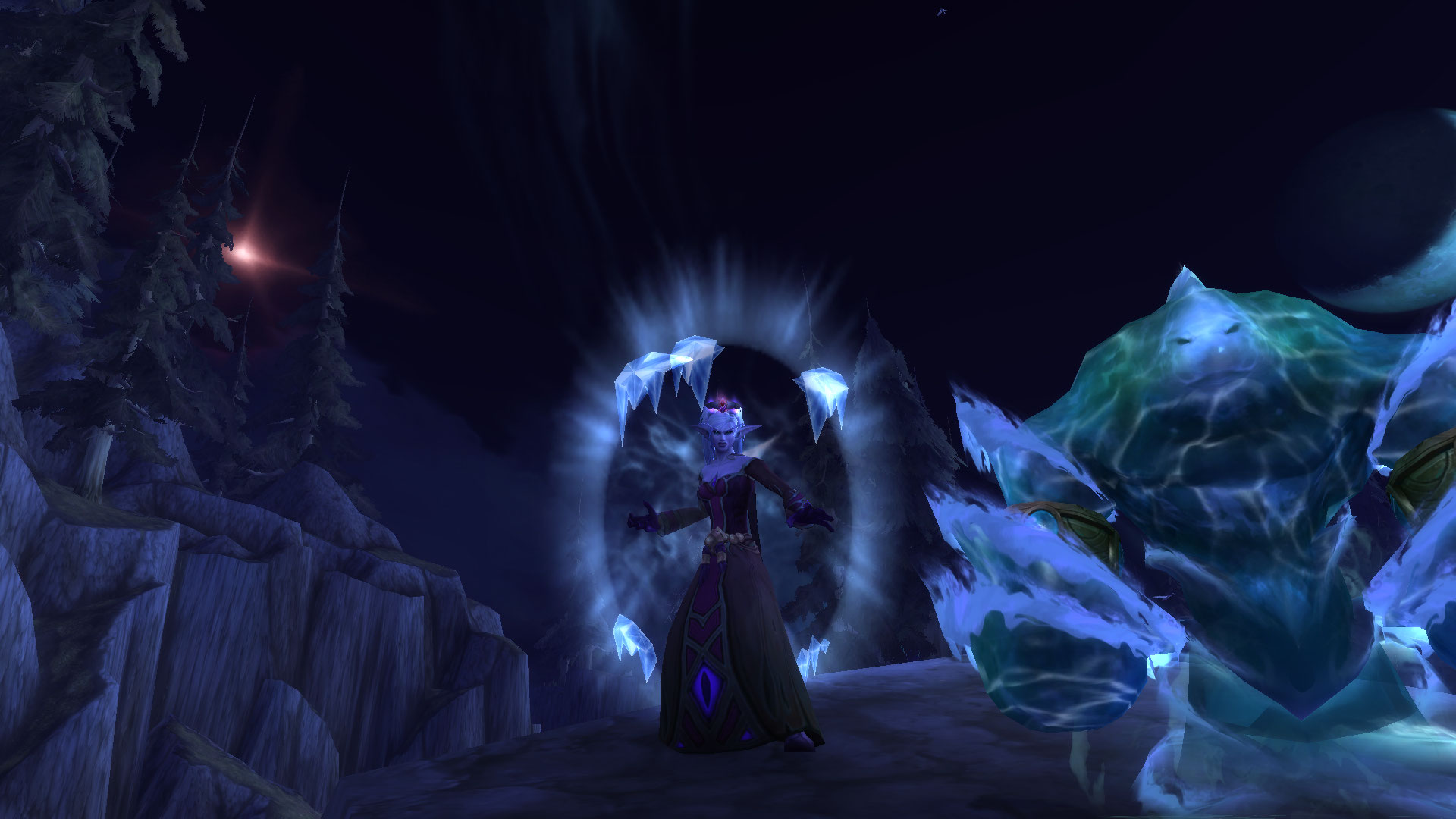
Mages are a cloth wearing, high damage ranged class and all three specs use a staff or wands, daggers, or one-handed swords. They are easily punished if they are caught in melee range but they have Ice Block as an immunity to help increase their survivability. They have good utility such as Teleport, Polymorph, and Invisibility but have no self-heals so are one of the harder classes to level. They can conjure food when out of combat though, so you can heal up between fights if needed. Mages also bring the Arcane Intellect buff, granting an increased intellect stat to all party and raid members.
Frost mages have the greatest ability to slow enemies, allowing for easier kiting, making this the easiest spec to level. They have high sustained single-target damage and are fairly mobile for a caster class, thanks to the Icy Floes ability that allows the mage to cast while moving. The Frost mage can also choose to use a pet to help deal damage.
Arcane has high mobility and strong all-around damage. The playstyle revolves around two phases: the conserve phase sees the mage conserving mana while the burn phase expends it, lining up with offensive cooldowns. However, their damage suffers if they're forced to move unexpectedly during a cooldown window.
Fire has incredibly strong burst damage and performs well with most encounter types. It has high mobility and relies heavily on procs from critical strikes. One possible downside is that they cleave damage onto multiple targets automatically so you could end up being overwhelmed.
Warlock (ranged damage)

Warlocks are a ranged, cloth wearing damage dealing class that use staffs as their preferred weapon choice. They rely heavily on generating Soul Shards—a secondary resource—as well as having access to a number of demonic pets that deal varying degrees of damage. Warlocks also bring a lot of utility to a group situation with a pre-castable battle resurrection, Demonic Gateways that can allow instant movement between two points and a portable summoning stone that allows players to summon group members to the warlock's location.
Demonology relies heavily on the use of various types of demons to deal damage. It has high mobility but requires some ramp up time to deal the most damage. In addition to your short-term summonable demons which are part of the rotation, you'll also have a permanent pet summoned which will help to deal damage and tank enemies for you.
Affliction is a multi-DoT spec and you'll need to be comfortable monitoring and maintaining DoTs on multiple targets to get the most out of it. It has high single-target and AoE damage though due to its multi-DoT nature, it can take some time for damage to ramp up. You'll also be able to summon a permanent pet to help you deal damage though this can be switched to a tanking pet if needed for levelling.
Destruction has the least ramp-up time of all warlock specs but it has the lowest mobility with some lengthy cast times. You'll be generating Soul Shards through a variety of different abilities and spending them on the hard-hitting Chaos Bolt or Rain of Fire in AoE situations. Like other warlock specs, you'll be able to keep a permanent demon pet with you to deal damage or tank enemies, depending on your needs.
Monk (melee damage/tank/healer)
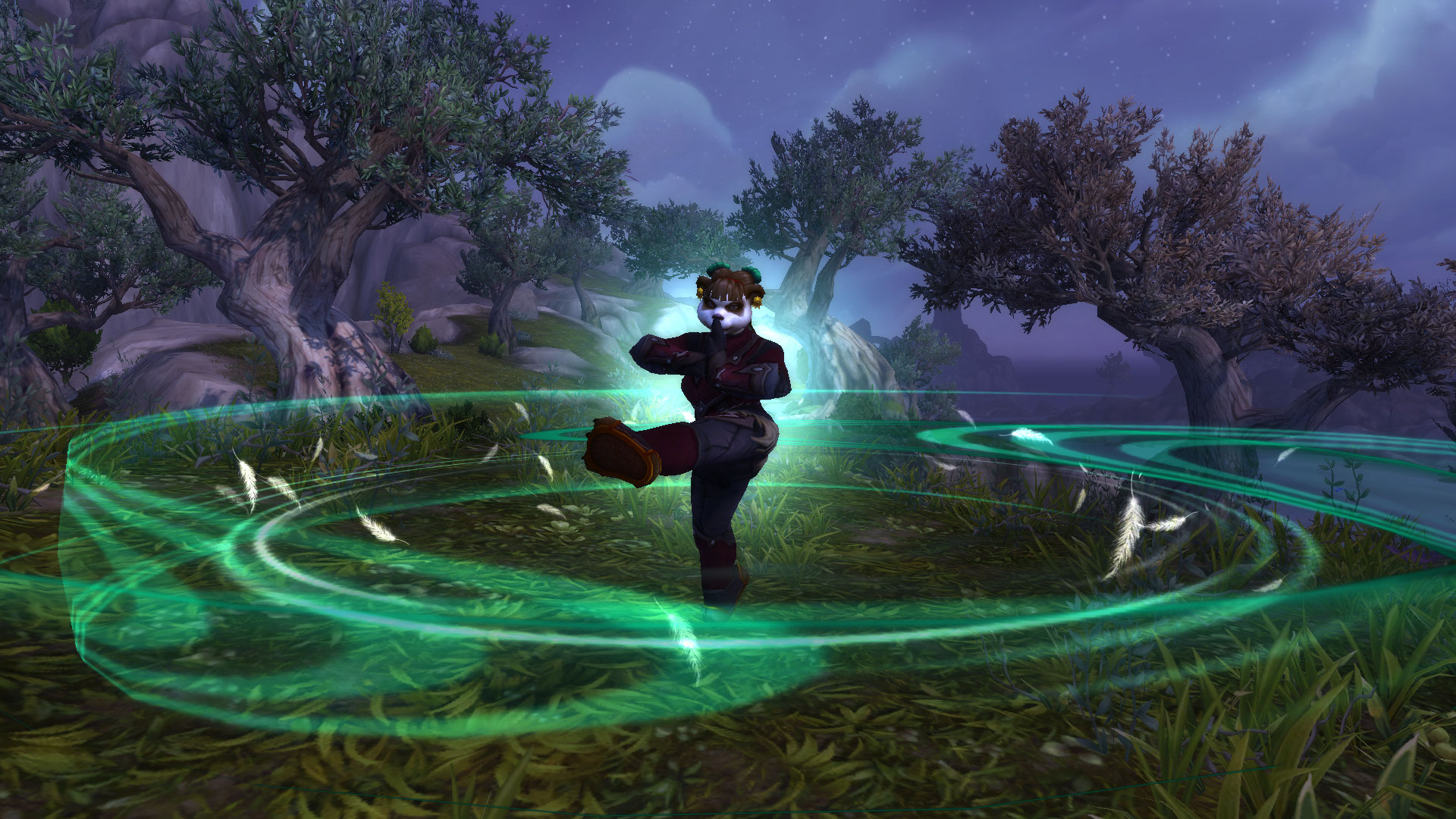
The monk class was added with the Mists of Pandaria expansion and is one of the most mobile classes in the game, thanks to the Roll ability. They wear leather armour and are highly versatile, having access to all three roles. They automatically apply a debuff to targets, making enemies take higher physical damage from all sources so they are useful in group situations for that alone.
Windwalker is the monk's damage-dealing spec and wields one-handed weapons. It uses Energy as a primary resource and must generate Chi to be spent on harder-hitting abilities. It has good AoE damage and a fun rotation with a lot of utility in the form of interrupts and other crowd control. Its high mobility and access to a healing spell make it a relatively safe spec to level.
Brewmaster is a tanking spec and uses a polearm or a staff as a weapon. It is one of the most mobile tanks in the game and deals with incoming damage by 'staggering' it over a short period. Because of this and their self-healing, they can take fairly large hits and are the safest of the monk specs for levelling.
Mistweaver is the monk's healing spec and uses a staff, mace or sword. They have high mobility for a healer and fair well with both single-target and group healing. Their defensive cooldowns give them high survivability in group content and they can do a reasonable amount of damage which allows them to help out when healing requirements are low. They're certainly viable as a levelling spec but you would do better to choose one of the other two specs unless you plan on levelling through dungeons.
Druid (melee and ranged damage/tank/healer)
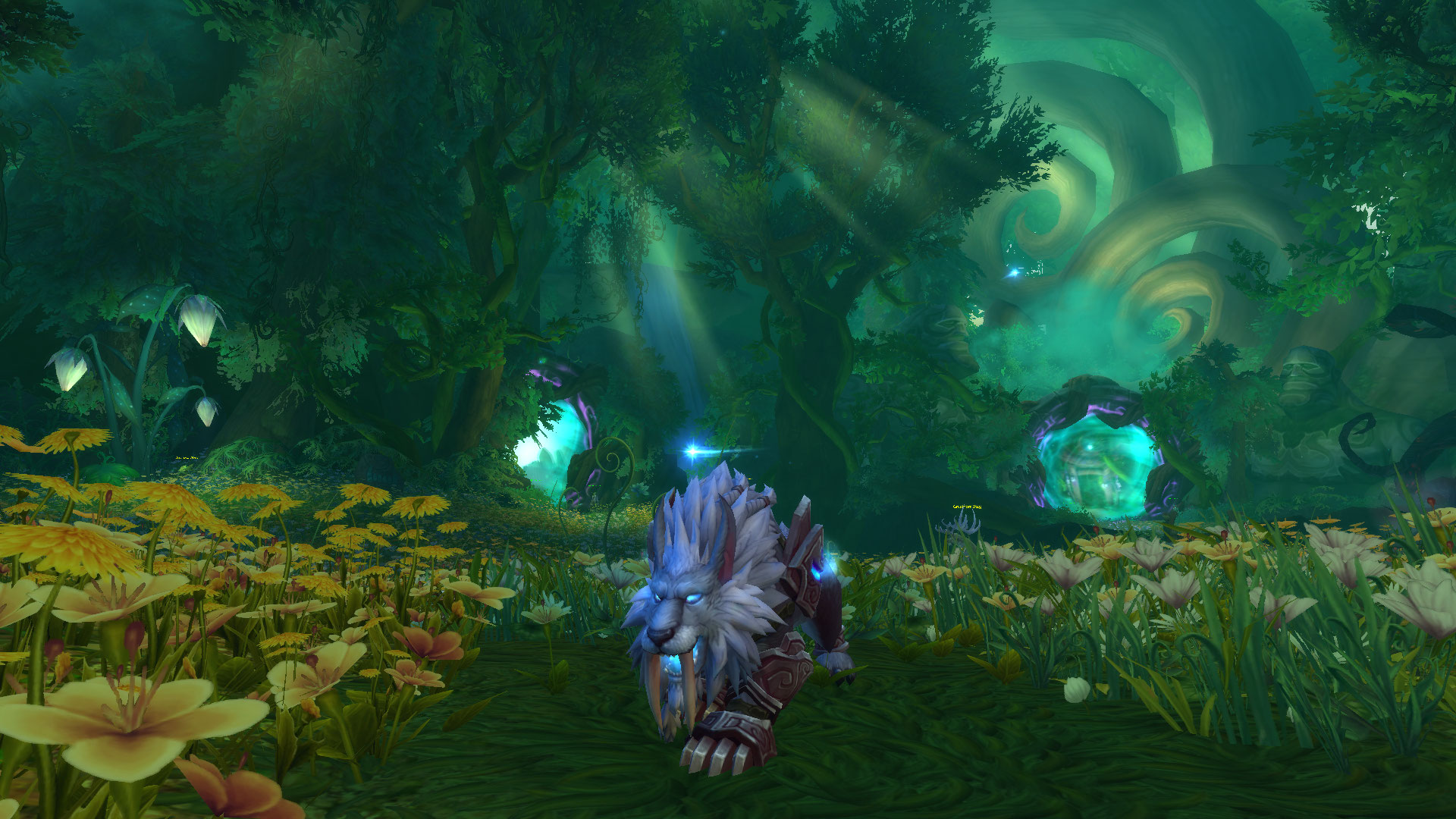
The Druid is one of the most versatile classes in the World of Warcraft; with four specialisations, it gives you the option to play all three roles as well as both a melee and a ranged damage role. Druids are shapeshifters and can take on different forms and switch between them with ease. Shapeshifting can also be used to escape roots and snares and Travel Form will replace the need for mounts or any kind. Druids are highly mobile thanks to Cat Form which increases movement speed and can be used anywhere.
Feral is the Druid's melee damage spec. It uses a staff or a polearm and requires Cat Form to play. It relies on keeping up multiple DoTs on your target as well as the management of two separate resources and is good on both single-target and AoE damage. It also has a stealth ability and this, along with its damage and access to healing spells, makes Feral a solid choice for levelling—though it's one of the more complicated specialisations to master if you want to get the most out of it in end-game content.
Balance is Druid's ranged damage spec and uses a staff, dagger or a mace. It requires Moonkin Form and is a multi-DoT spec that performs well in both single-target and AOE situations. You'll need to manage your Astral Power resource as well as Solar and Lunar Empowerment charges, making this a fairly difficult class to master. And while Balance isn't as squishy as other ranged classes, Feral is generally easier to level with.
Guardian is the Druid's tanking spec, uses a staff or polearm, and requires Bear Form to use. It relies on its large health pool, passive abilities that give damage reduction and additional healing, and has an active damage mitigation ability (with no cooldown) which can be stacked but uses its primary resource, Rage. Guardian is a viable option for levelling, especially if you're looking to do a lot of dungeons—tank = faster queue time.
Restoration is the Druid's healing spec uses a staff, dagger, or a mace. It is a very strong and versatile healer and works well as a raid healer or where damage is consistent. It relies on various HoTs (heal over time) spells but has a number of cooldowns for emergency situations and burst healing.
Demon Hunter (melee damage/tank)
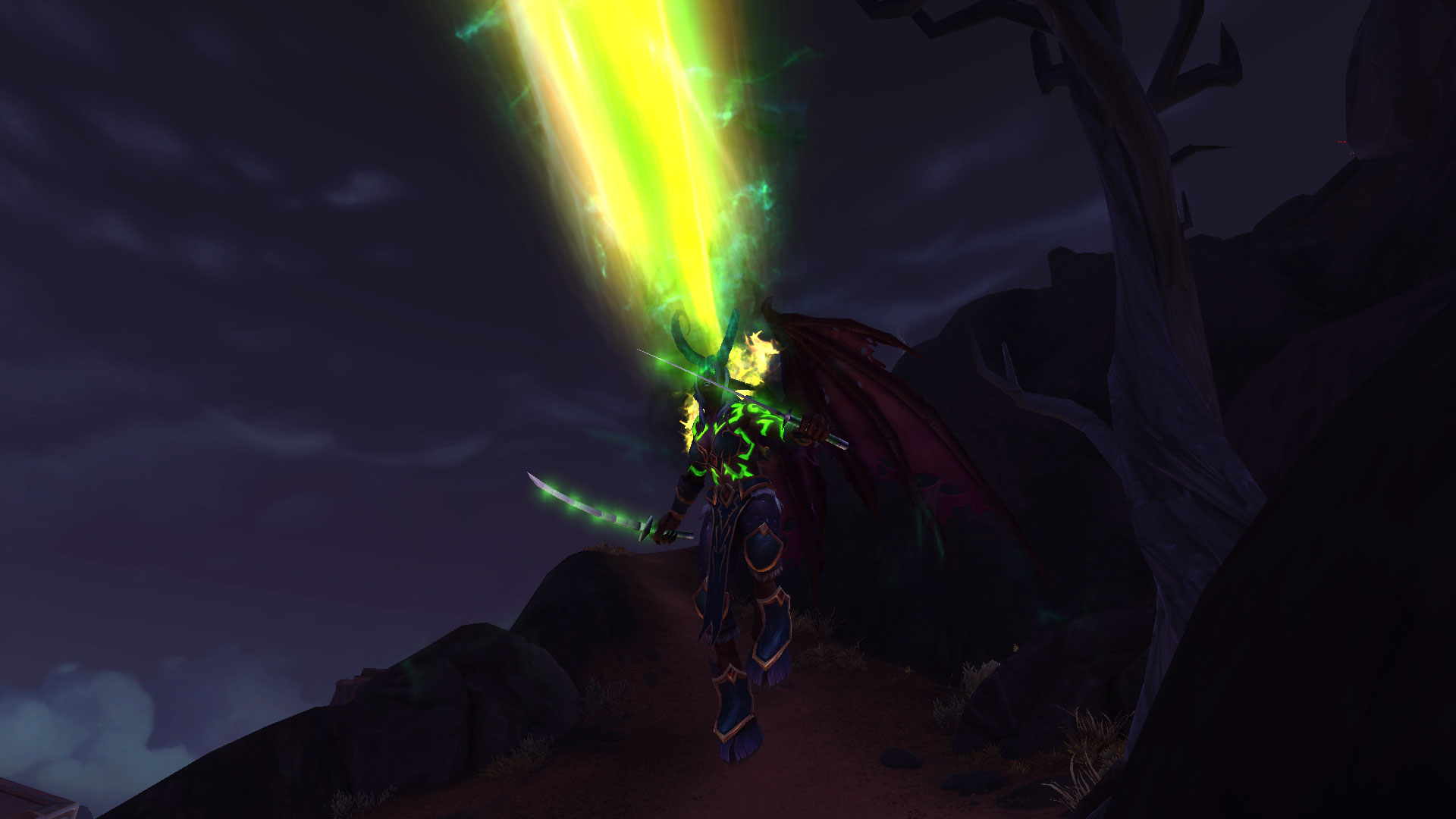
Demon hunters were added at the beginning of the Legion expansion and start at level eight in Shadowlands. They wear leather armour and use warglaives, swords, axes, or fist weapons. Demon hunters have what is probably the highest mobility in the game and their Glide ability means you'll never have to take fall damage. They also debuff targets to take more magic damage from all sources, making them sought after for group content. Demon hunters only have two specs to choose from but they are both incredibly fun to play, not least because of the Metamorphosis ability which transforms your character into a demon for a short time.
Havoc is the damage class of demon hunters. It can deal a huge amount of damage and can take on large packs of enemies with ease. It has very powerful offensive cooldowns to deal high damage. Killing enemies also has a high chance of producing Soul Fragments which heal the demon hunter when picked up, making levelling incredibly easy.
Vengeance is the demon hunter tanking spec and works with a combination of damage reduction and healing abilities. They have high mobility and high damage output for a tank and have a number of crowd-control abilities to help lock enemies down. They shine in both dungeon and raid environments.
Death Knight (melee damage/tank)

Death knights were introduced with the Wrath of the Lich King expansion. They are a plate armour wearing melee class and start at level eight in Shadowlands. They use Runes and Runic Power as resources. They have a good amount of utility including Death Grip which pull the enemy target to the player as well as a number of interrupts and slows. They are also one of the few classes to have a combat resurrection.
Unholy is a damage spec and uses two handed axes, maces, or swords. It relies on spreading disease to enemies with their abilites as well as summoning undead minions to come to their add for additional damage. Unholy performs well with both single-target and AoE situations though it has some ramp up time. For this reason, it may not be the ideal spec for levelling.
Frost is the second damage spec and is arguably the easiest death knight spec to learn. It dual-wields one-handed weapons and deals good burst AoE damage but is probably one of the slower specs in terms of mobility. It has good utility and some self-healing with the Death Strike ability.
Blood is a tanking spec and has great self-sustain with the use of Death Strike and Marrowrend, which applies stacks of Bone Shield. It has a number of defensive cooldowns but generally keeps itself alive by healing back up after taking damage, rather than preventing the incoming damage. It has great utility with Gorefiend's Grasp which pulls hostile targets to one spot, making it easy for groups of enemies to be damaged together. Blood is the safest spec to level as if you're thinking of playing a death knight.
Keep up to date with the most important stories and the best deals, as picked by the PC Gamer team.

Sarah started as a freelance writer in 2018, writing for PCGamesN, TechRadar, GamingBible, Red Bull Gaming and more. In 2021, she was offered a full-time position on the PC Gamer team where she takes every possible opportunity to talk about World of Warcraft and Elden Ring. When not writing guides, most of her spare time is spent in Azeroth—though she's quite partial to JRPGs too. One of her fondest hopes is to one day play through the ending of Final Fantasy X without breaking down into a sobbing heap. She probably has more wolves in Valheim than you.

